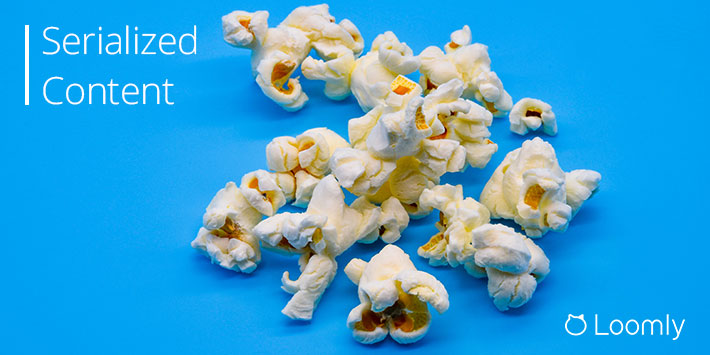Serialized Content: How to Take Advantage of Serialization to Grow Your Brand
Serialized content isn’t a new concept.
You only have to go back to the nineteenth century to witness the enormous popularity of serials written by Charles Dickens, including The Pickwick Papers in 1836 and Dombey and Son in 1846.
Or the reach in millions of popular print magazines, like Reader’s Digest, National Geographic, and Cosmopolitan.
Or the addictive audience for TV soap operas such as The Bold and the Beautiful, Days of our Lives, and The Young and the Restless.
Today, serialized content is more popular than ever:
- Netflix produces season-long hit series, like House of Cards, rather than one-off films.
- YouTubers upload mini-series covering a single topic.
- Quibi, a new venture launched by Jeffrey Katzenberg and Meg Whitman’s in April, offers mobile-friendly shows split into chapters.
Your brand can be part of the serialized content revolution, too.
In this guide, you’ll discover what serialized content is, why your brand should use it, and how you can take advantage of it.
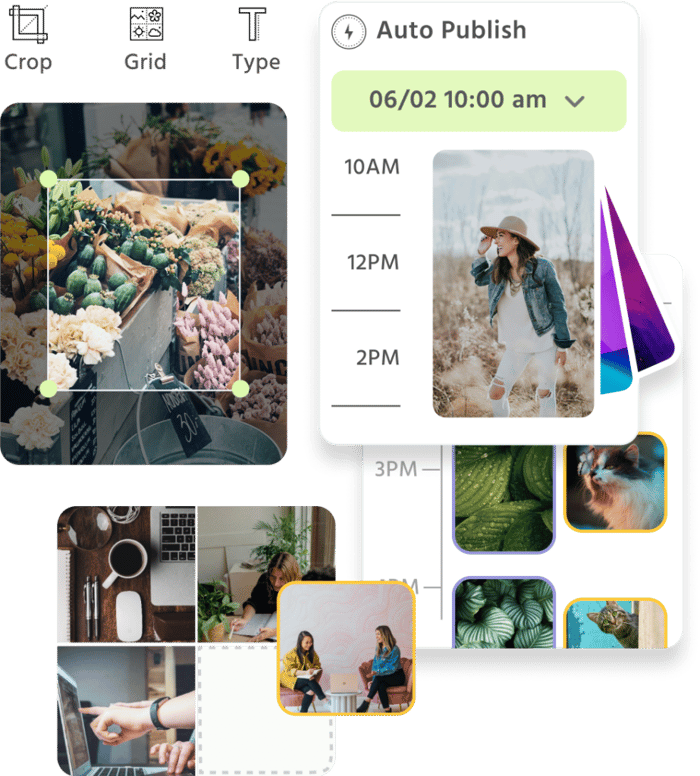
Manage all your social media accounts in one place.
Craft, schedule, & auto-post content to all your social channels, then track analytics and manage interactions from a single, easy-to-use dashboard.
What is Serialized Content?
Content serialization involves taking one concept or topic and turning it into many smaller chunks or installments, so you develop a series based on one idea.
For example, the Lord of the Rings trilogy was too large for one story, so Tolkien broke it down into three parts.
However, content serialization isn’t limited to authors. So let’s take a look at some other types of content.
Examples of successful content series
Many YouTubers, especially in the food vertical, are serializing their content. Rather than uploading one-off videos, they create a series of related content. For example:
- Binging with Babish has his “Basics with Babish” series.
- Alex French Guy Cooking turned his entire channel into a series of series.
- Pro Home Cooks has a series called “The Art of Crafting the Perfect Sandwich Series.”
- Joshua Weissman, who loves to eat things containing a large quantity of butter, has his “But Better” series.
It’s not only the food vertical who have serialized content but also the tech vertical, such as Marques Brownlee with his YouTube Originals “Retro Tech” series:
The motor industry:
Plus the health and fitness niche, for instance with The Body Coach TV who has different series of content on Fat Burners, Workouts for Seniors, Cardio Workouts, Beginner Workouts, 20-Minute Workouts, and more:
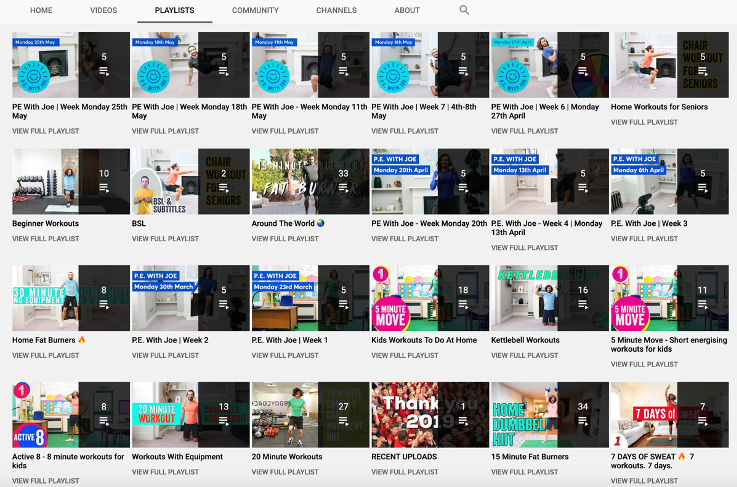
We don’t have to limit ourselves to YouTube, though.
Serialized content is available in many forms. For instance, take the current UK TV series, Belgravia, which started as a book, and transformed into an app, before hitting our TV screens:
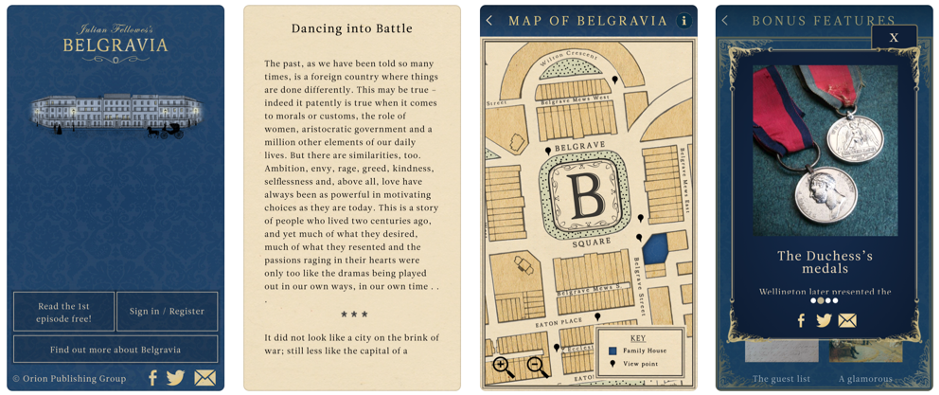
On LinkedIn, conversion copywriter and web consultant Gill Andrews writes an extremely popular “Website Tip of the Day” series where she shares valuable tips on website optimization:
It’s proven so popular, that Gill has also published a book, Making Your Website Work, containing the first 100 tips:

As Gill explains:
At some point, I started getting messages from people asking me where they can read all of the tips. Some even suggested that I should put them in a book. I was reluctant at first, but when I got message #20 about it, I was like, ok, it looks like people really want this.
Why Your Brand Should Serialize Content
Now you know what serialized content is, let’s take a look at why it works and how it can benefit your brand.
1. Serialized content builds anticipation
Once your existing audience has tasted one installment of your content, they’ll be eagerly anticipating the next episode, the next book, or the next product. In a way, it’s like giving a “Rendez-Vous” to your followers: See you next week for the next episode.
2. Serialized content grows your followers
People who watch and like one episode of the series are likely to subscribe to attend the next one. Plus, blog serialization creates excellent internal linking that leads readers from one post to the next, and keeps Google happy, too.
3. Serialized content reaches a wider audience
Search and social algorithms are likely to suggest new episodes to users who have watched a previous episode.
4. Serialized content increases conversions
Whether your site’s goal is more email subscriptions, more product trials, or more social shares, serialized fans become hooked and are more likely to convert.
5. Serialized content enables longer storytelling
Serialized content allows you to integrate a longer narrative arc, so rather than cramming everything into one chapter, you extend your story into a series.
6. Serialized content inspires more creativity
One idea can be turned into months of content. It’s an ideal opportunity to go deep on a topic rather than skimming the surface.
7. Serialized content improves productivity
Serialization saves costs and time through economies of scale, consistent workflow, and focused content creation. It can help fill out your editorial calendar and speeds up the approval process.
8. Serialized content boosts brand awareness
Serialized content helps boost your brand name. It keeps your brand in the limelight and front of your target audience as content appears consistently.
9. Serialized content helps knowledge retention
Serialized content gives your audience more time to digest and grasp concepts. You can divide one broad topic into smaller segments, which improves knowledge retention and avoids content overload.
10. Serialized content works better on mobiles
Shorter pieces of content are more accessible on a mobile screen than larger pieces. For instance, it’s much easier to read or listen to a chapter of an ebook than reading the whole book.
How to Serialize Content
As we’ve seen already, you can use serialized content on different marketing platforms. In this section, we’ll take a look at how you can take advantage of serialized content on:
- Social Media
- Blogs
- Podcasts
- Ads
Let’s dive in.
1. Social Media
There are plenty of ways to serialize your content on social media.
Using hashtags
For example, the hashtag #LinkedInLearnerLounge groups all of John Espirian’s LinkedIn tips and makes it easy to find:
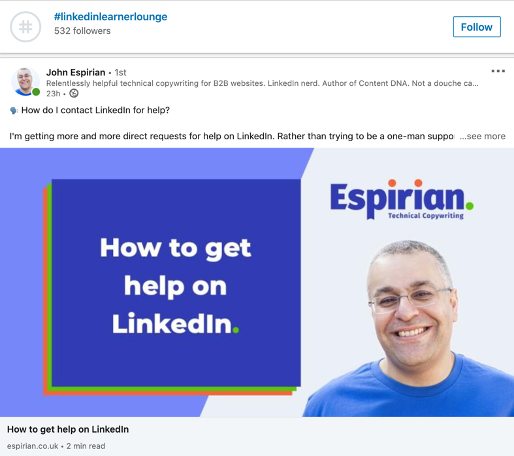
Saying things like “post 1/3”
This sets an expectation that there’s more to follow. It could be in an extended thread on Twitter, or a reminder to check the next Instagram post.
Using playlists on YouTube
Playlists are a natural way to group related content so that you can use them for a mini-series on a topic. Here’s the playlists of Alex “French Guy Cooking” featuring series on Perfect Neapolitan Pizza, Ramen Addiction, The Perfect Meatball, and more:
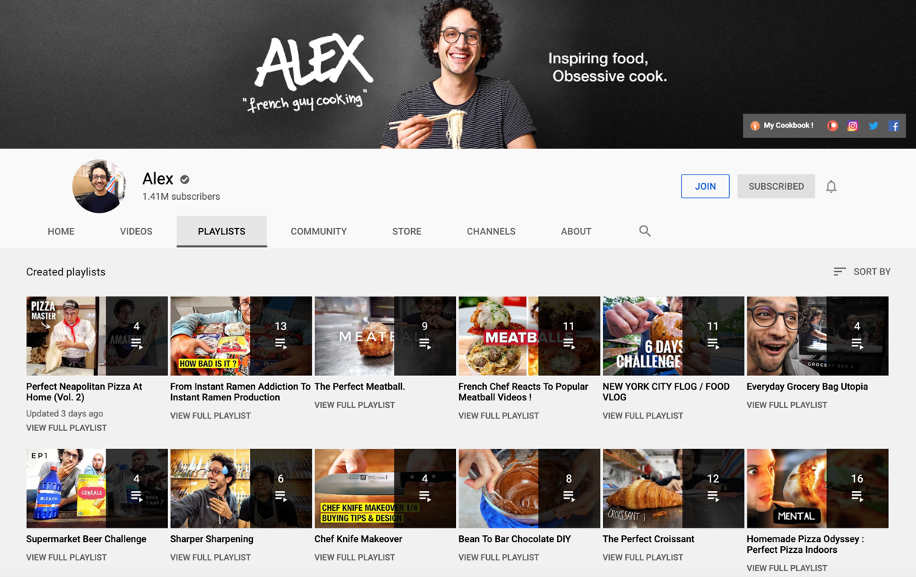
Using Twitter Chats
Brands use Twitter Chats to host weekly chats with their community. For example:
- #TwitterSmarter chat Thursday 1pm ET.
- #SEMrushChat Wednesday 11am ET.
Using consistent visuals
Brands who use a consistent color palette for their visuals make it easier for their content to be recognized and consumed by followers. For example, here’s a sample of the Grammarly image grid on Instagram:
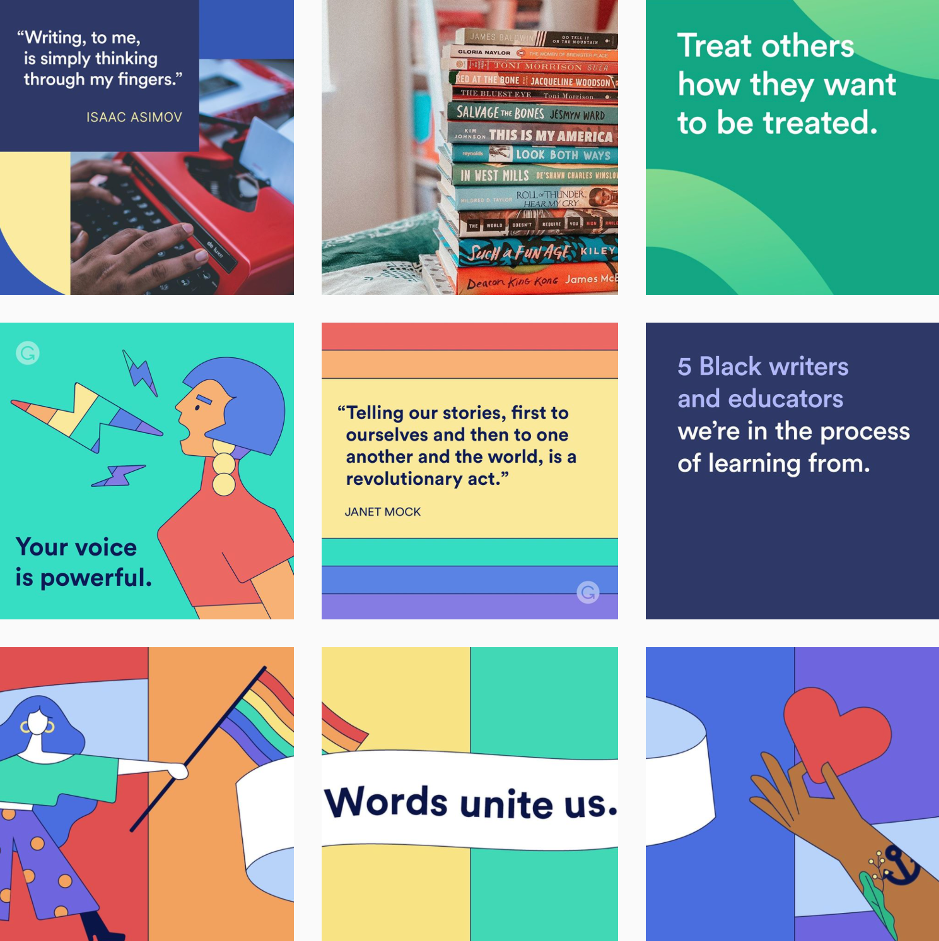
According to Sean Lynam, Director of Marketing at GLOW, they’ve seen an increase in Facebook engagement via serialized images:
By posting a set of 10-15 images over the course of 7-10 days, that all follow the same aesthetic, we’ve seen the momentum of that series returns an increase in engagement in a monumental way.”
2. Blogs
Blogs provide the perfect place to split broad topics into a small mini-series or present regular weekly updates on a theme.
Stefanie Flaxman, editor-in-chief at Copyblogger, describes how you can turn one content idea into a fascinating four-part series:
- Installment #1: Establish your authority
- Installment #2: Educate with a simple, relevant background lesson
- Installment #3: Share your tutorial
- Installment #4: Add extra value and advanced tips
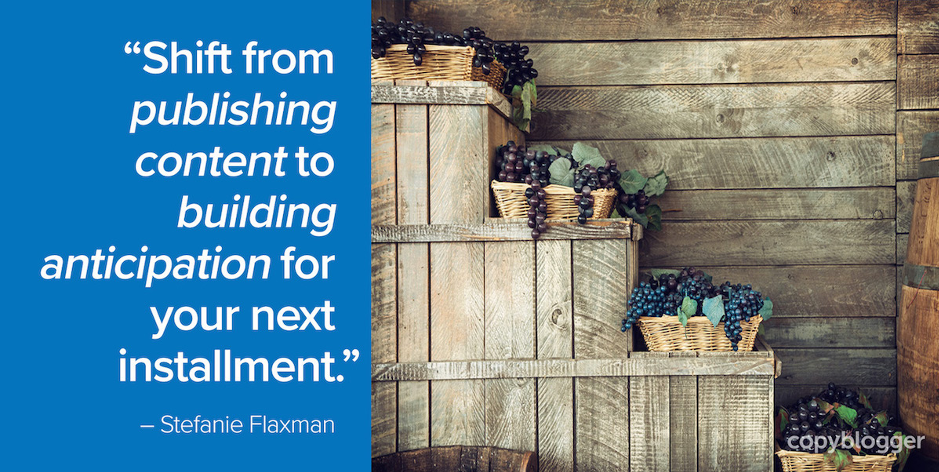
One of the best examples of serialized blog content is Whiteboard Friday on the Moz blog.
Started by Rand Fishkin and continued by Britney Muller, readers know they’re going to get a weekly installment of SEO wisdom presented on video and illustrated on a whiteboard, like this episode on How to Create 10x Content:
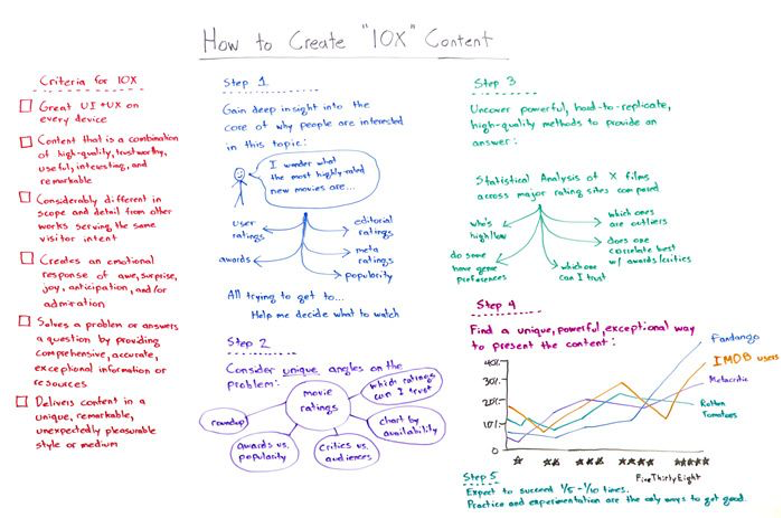
You get a video presentation on the whiteboard, plus there’s a text transcription of all the main points.
The OpenView blog also has a blog series called the Weekly Walks where Casey Renner walks and interviews industry leaders, such as Edna Conway (VP and GM Global Security, Risk and Compliance, Azure at Microsoft):
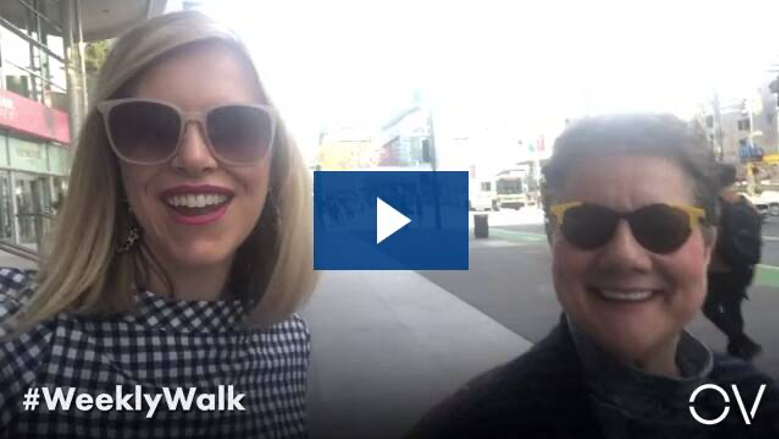
3. Email
Email is an excellent medium for creating and sharing serialized content.
Sending regular newsletters
Loomly’s newsletter is serialized, with each issue having its own number. For example, Brand Success Digest #60:
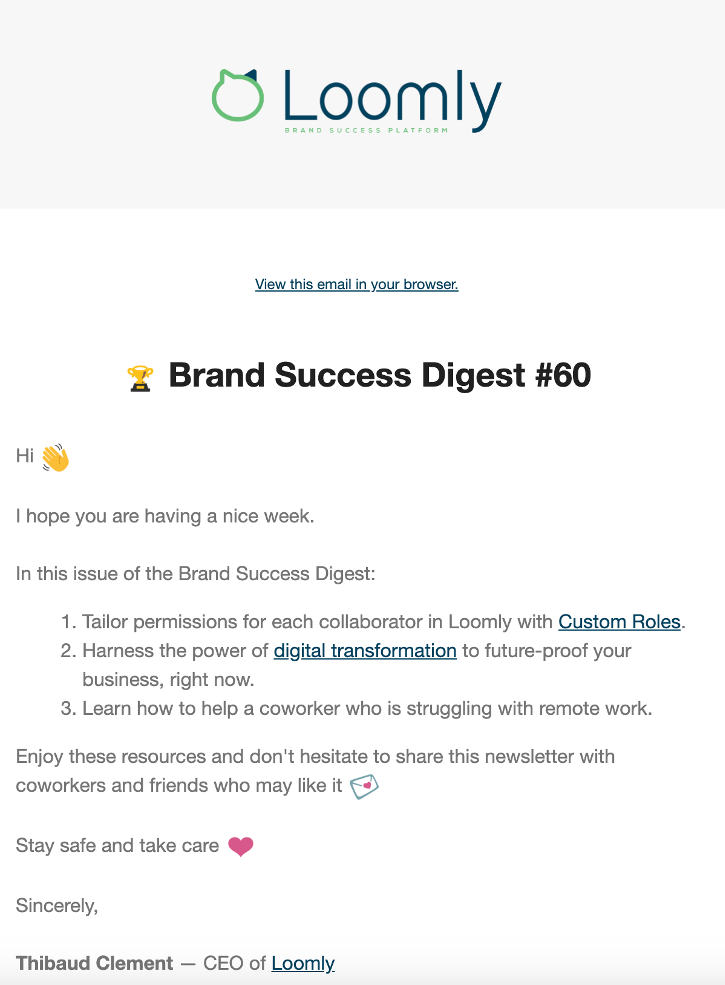
Gill Andrews’ newsletter is also serialized. For example, “2 ultra-short tips to improve your website [Vol. 32]”:
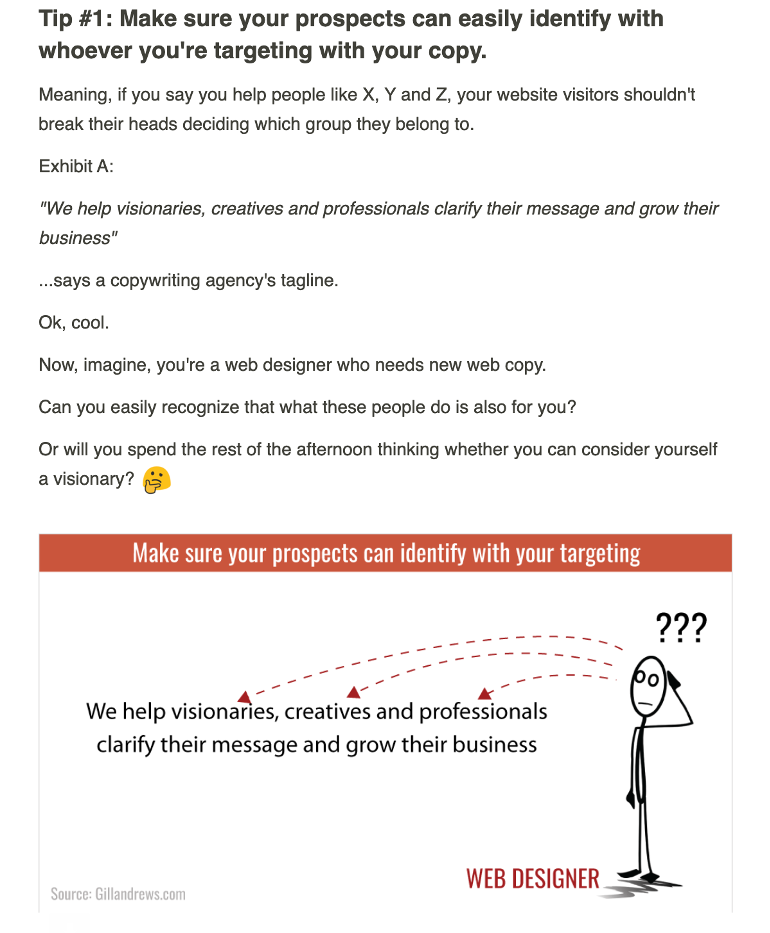
Sending a welcome series
Most email marketing tools will allow you to send a welcome email sequence where you can introduce your brand and highlight your best content.
Drip feeding courses
Breaking educational content into small bite-sized chunks and delivering them by email is a successful way to build your email list and deliver serialized content.
For example, the 16-Part Snackable Writing Course by Henneke Duistermaat at Enchanting Marketing comes in 16 ultra-short emails with easy-to-implement tips, so it’s easy to digest and implement the knowledge piece-by-piece.

4. Podcasts
Podcasts offer a natural way to serialize your content, so much so, one popular podcast was named Serial. Podcasts allow brands to focus on their core topics and deliver weekly episodes for their fans to tune into. For example:
- The Brand Moat podcast uses inspirational stories from global leaders who share how to build your brand and future-proof your business:
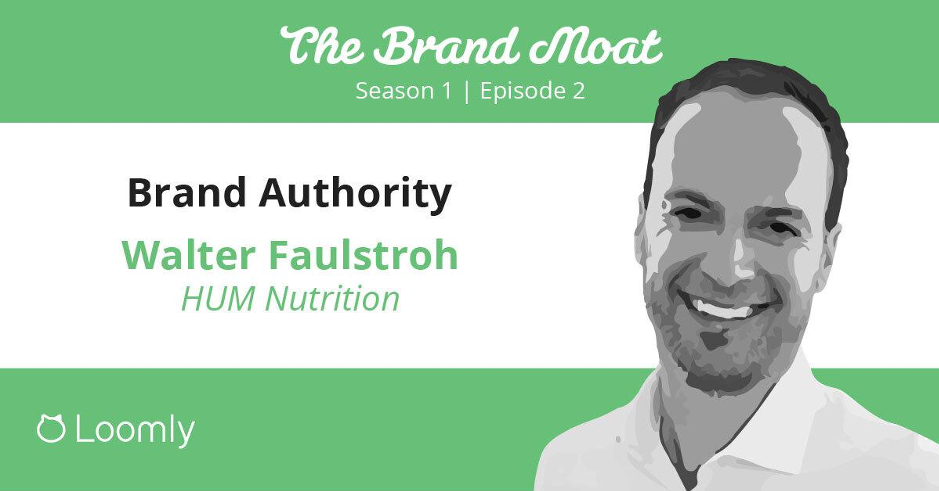
- The PLG 123 podcast focuses on Product Led Growth:

5. Ads
You can also use serialized content in your social media ads to promote brand awareness and increase traffic. For example:
- Porsche used three short videos in a Facebook carousel ad for its #SportscarTogether campaign:
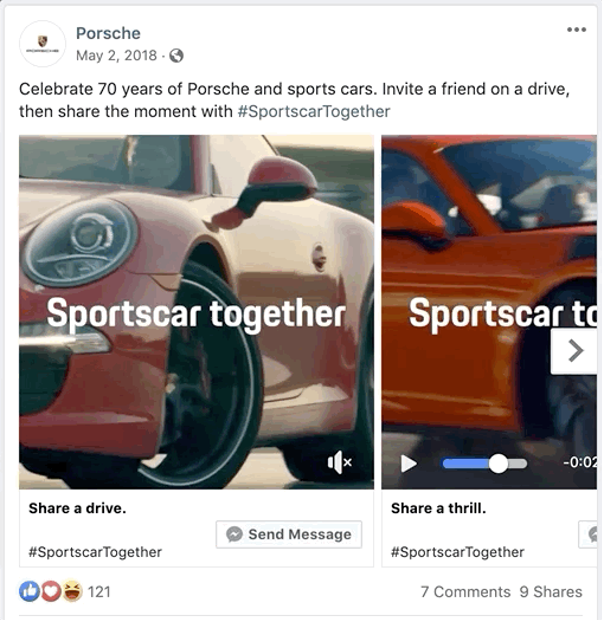
- Bill Rice, from digital agency Kaleidico, promoted eight web design tips to prompt conversions in an Instagram carousel ad:

Serialized Content in a Nutshell
Here’s a quick recap on what we’ve covered today.
Serialized content has been around a long time. It lets you take one concept or topic and turning it into a series of smaller installments. It’s a great way to share information, engage your audience, and promote your brand.
You can use it in different marketing channels, including social media, blogs, email, podcasts, and ads.
Serialized content has many benefits, such as:
- Building anticipation
- Growing your followers
- Reaching a wider audience
- Increasing conversions
- Improving productivity
It’s time for your brand to embrace serialized content and captivate your audience.
